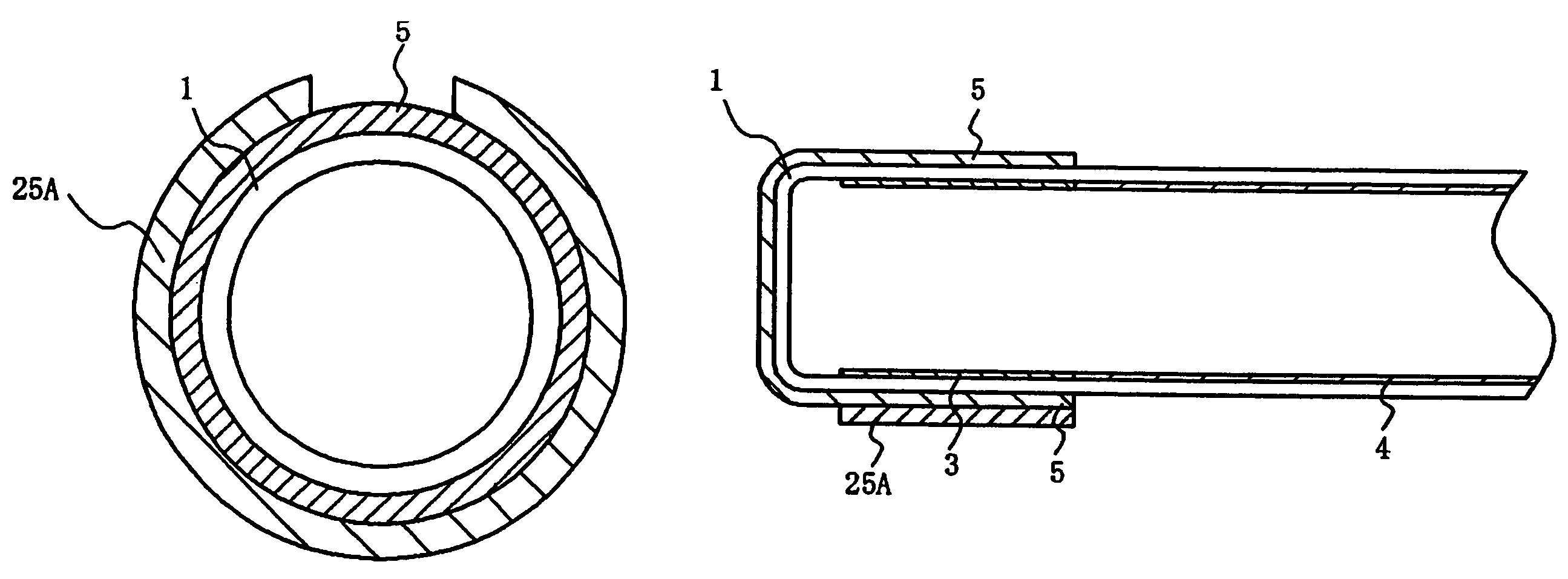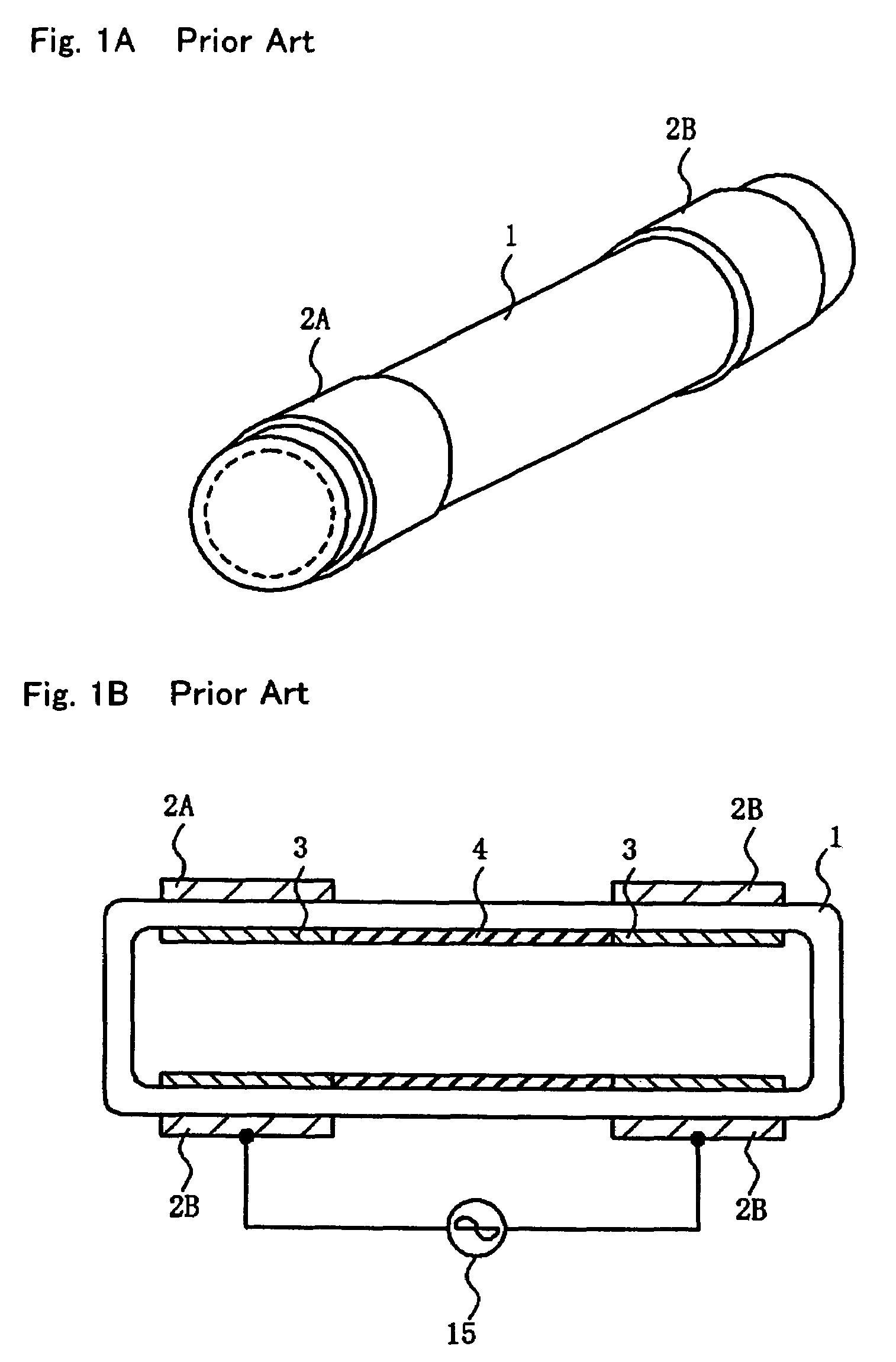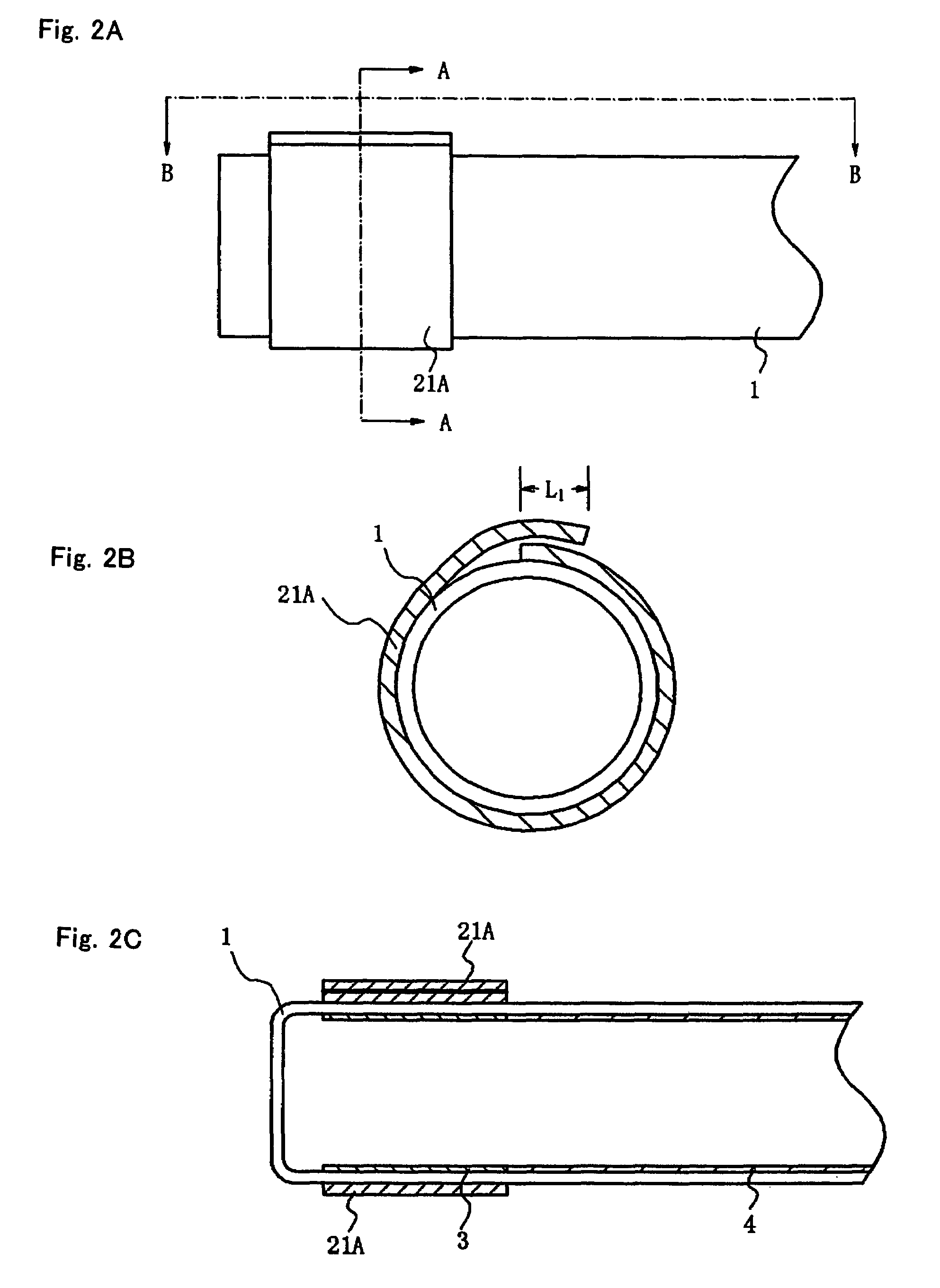External-electrode discharge lamp with no light leakage from external electrode portion
a discharge lamp and electrode technology, applied in the direction of soldering apparatus, instruments, manufacturing tools, etc., can solve the problems of increased thickness of display panels, increased manufacturing costs, and increased power supply for turning on lamps
- Summary
- Abstract
- Description
- Claims
- Application Information
AI Technical Summary
Benefits of technology
Problems solved by technology
Method used
Image
Examples
1st embodiment
[0060]FIG. 2A shows in side elevation an external-electrode discharge lamp according to a first embodiment of the present invention. FIG. 2B is a transverse cross-sectional view taken along line A-A of FIG. 2A, and FIG. 2C is a longitudinal cross-sectional view taken along line B-B of FIG. 2A. In FIG. 2A, only a portion of the external-electrode discharge lamp which includes one external electrode 21A on one end thereof is illustrated. However, the external-electrode discharge lamp also has another external electrode, which is identical to external electrode 21A, on the other end thereof, as with the case of conventional one shown in FIGS. 1A and 1B. In FIG. 2B, internal structural details of the external-electrode discharge lamp are omitted from illustration.
[0061]The external-electrode discharge lamp according to the first embodiment is a mercury fluorescent lamp that comprises a gas containing mercury vapor as a discharge medium and emits light with the help of a fluorescent mate...
2nd embodiment
[0068]FIG. 3A shows in transverse cross section an external-electrode discharge lamp according to a second embodiment of the present invention. FIG. 3B is a longitudinal cross-sectional view of the external-electrode discharge lamp shown in FIG. 3A. In FIG. 3A, protective layers 3 on the inner surface of glass bulb 1 are omitted from illustration.
[0069]The external-electrode discharge lamp according to the second embodiment is similar to the external-electrode discharge lamp according to the first embodiment in that it has ring-shaped external electrodes 22A with overlapping ends, but differs therefrom in that solder layer 5 is interposed between each external electrode 22A and glass bulb 1.
[0070]As described above, if a C-shaped external electrode is simply fitted over a glass bulb or a metal foil is used as a base for a C-shaped external electrode, as with the conventional structures, then since the external electrode is held only in mechanical contact with the glass bulb or the m...
3rd embodiment
[0090]FIG. 5A shows in transverse cross section an external-electrode discharge lamp according to a third embodiment of the present invention. FIG. 5B is a longitudinal cross-sectional view of the external-electrode discharge lamp shown in FIG. 5A. In FIG. 5A, protective layers 3 on the inner surface of glass bulb 1 are omitted from illustration.
[0091]The external-electrode discharge lamp according to the third embodiment is similar to the external-electrode discharge lamps according to the first and second embodiments in that it has ring-shaped external electrodes 23A with overlapping ends, but differs therefrom in that uninterrupted metal layer 11 extending circumferentially on and around glass bulb 1 and adhesive layer 12 extending on and around metal layer 11 are interposed between each external electrode 23A and glass bulb 1, external electrode 23A being fixedly bonded to glass bulb 1.
[0092]According to the third embodiment, external electrode 23A is bonded to glass bulb 1 by a...
PUM
| Property | Measurement | Unit |
|---|---|---|
| pressure | aaaaa | aaaaa |
| pressure | aaaaa | aaaaa |
| voltage | aaaaa | aaaaa |
Abstract
Description
Claims
Application Information
 Login to View More
Login to View More - R&D
- Intellectual Property
- Life Sciences
- Materials
- Tech Scout
- Unparalleled Data Quality
- Higher Quality Content
- 60% Fewer Hallucinations
Browse by: Latest US Patents, China's latest patents, Technical Efficacy Thesaurus, Application Domain, Technology Topic, Popular Technical Reports.
© 2025 PatSnap. All rights reserved.Legal|Privacy policy|Modern Slavery Act Transparency Statement|Sitemap|About US| Contact US: help@patsnap.com



